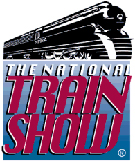Breaking Ties
Trackwork Construction Video
A riveting few minutes of watching trackwork being built. I completed most of the trackwork sections for the Bronx Terminal in 2007 using a minimal number of PC board ties. Since then I have decided to fill in all the additional ties with PC board as well. The original idea was to use wood ties cut on the laser, similar to our QuickSticks, but not wanting to have to draw all the QuickSticks for this project I decided to just use PC board ties for the remaining area. The advantage of this is that the completed trackwork is very solid and will withstand years of use. The downside is it is tedious and time consuming to do. I can finish off about 2 turnouts in an evening, and with 27 turnouts, well you do the math.
Shown in the video above is the process. Here, using a simple alignment jig cut on the laser from cardboard, I file, gap, cut to size and solder on five ties. The laser cut jig helps keep everything in place while I solder, the same could be done with a printed diagram of the tie pattern, but I would have to solder each tie after it was placed. Repeat this procedure a few hundred mind numbing times and you get the idea of the job at hand. After the ties are soldered in place I use a dental tool to scrape the excess solder from the sides of the rail, then clean the ties with a wire brush.
I also spend time forming throwbar and switch points, which isn’t shown on this video, but I do show the completed points near the end, and how they work.
BTW, that is the CBC playing in the background, with the occasional “I’m over here” bark from Bryn.
Enjoy.
-T.
On to Next Section.
About the Author:
I'm your host, Tim Warris, a product developer in Port Dover, Ontario. Since March of 2007 I have been documenting the construction of the former CNJ Bronx Terminal in HO scale. For my day job, I design track building tools for Fast Tracks, a small company I own and operate. Fast Tracks makes it fast and easy to hand lay your own trackwork. Stop by our website to learn more!
Posted by: Tim | 03-12-2009 | 08:03 AM
Posted in: Latest Posts | Track Construction | Video

If I ever decide to go with handlaid track, I’ll have to get one of those laser cutters as well. That seems like a really handy machine.
Very nice, very efficient!
Actually.. yes.. very riveting and informative. Keep posting stuff like this, its a very good teaching tool. I would like to see more about laying track for wooden ties.
What kind of soldering iron are you using now? The one in the video is different from the Weller model shown in the older Fast Tracks videos.
Hi,
On the above video I am using a Pace Soldering Station. We carried these on our site at one time and I ended up with one. They work well, perform as well as a Weller iron with about the same amount of wattage. What I like about this unit is that the tip heats up instantly so it can be shut off when not in use and quickly brought up to temperature when needed.
-T.
Hello!
Well, here it is, the year 2015, and your work on the Terminal still has the power to amaze me.
That Ruppert sign is well known to me from the 1940’s and early fifties. At night, it would illuminate the night sky of East Harlem, where my Mom’s folks lived, and those Harlem River bridges were once familiar routes for my family’s trips back and forth between East Harlem and the South Bronx.
Again, let me congratulate tou on your terrific work. It’s a real achievement, a rare combination of engineering brains, craftsmanship, and artistic ability.
Best wiishes from
——Denis Cullinan